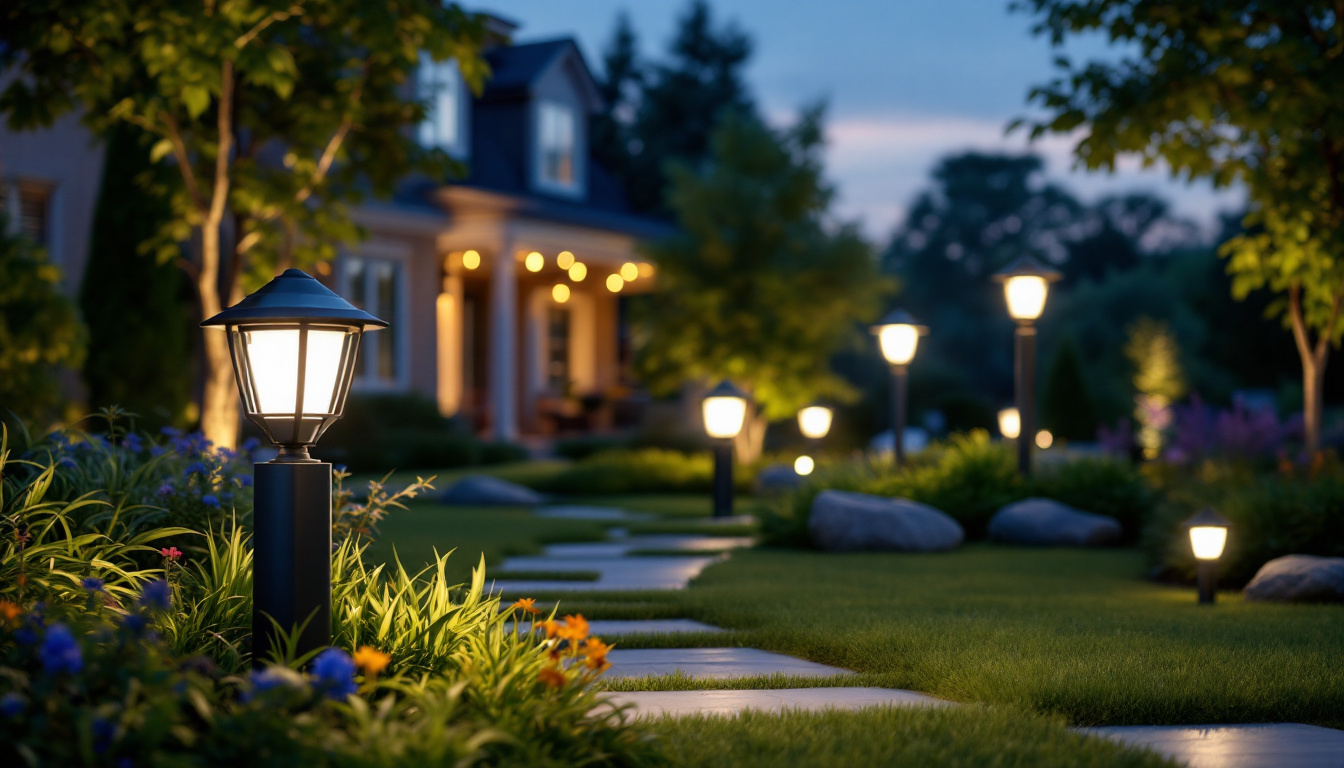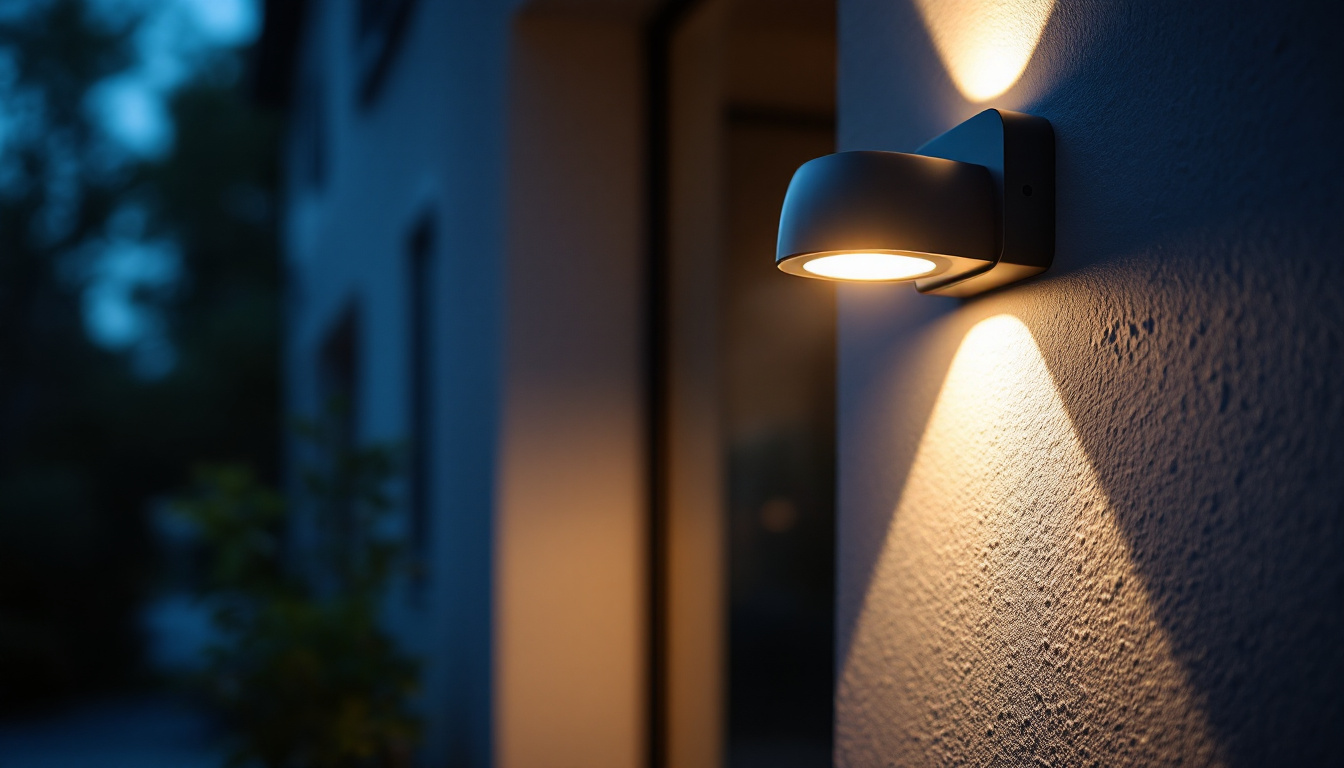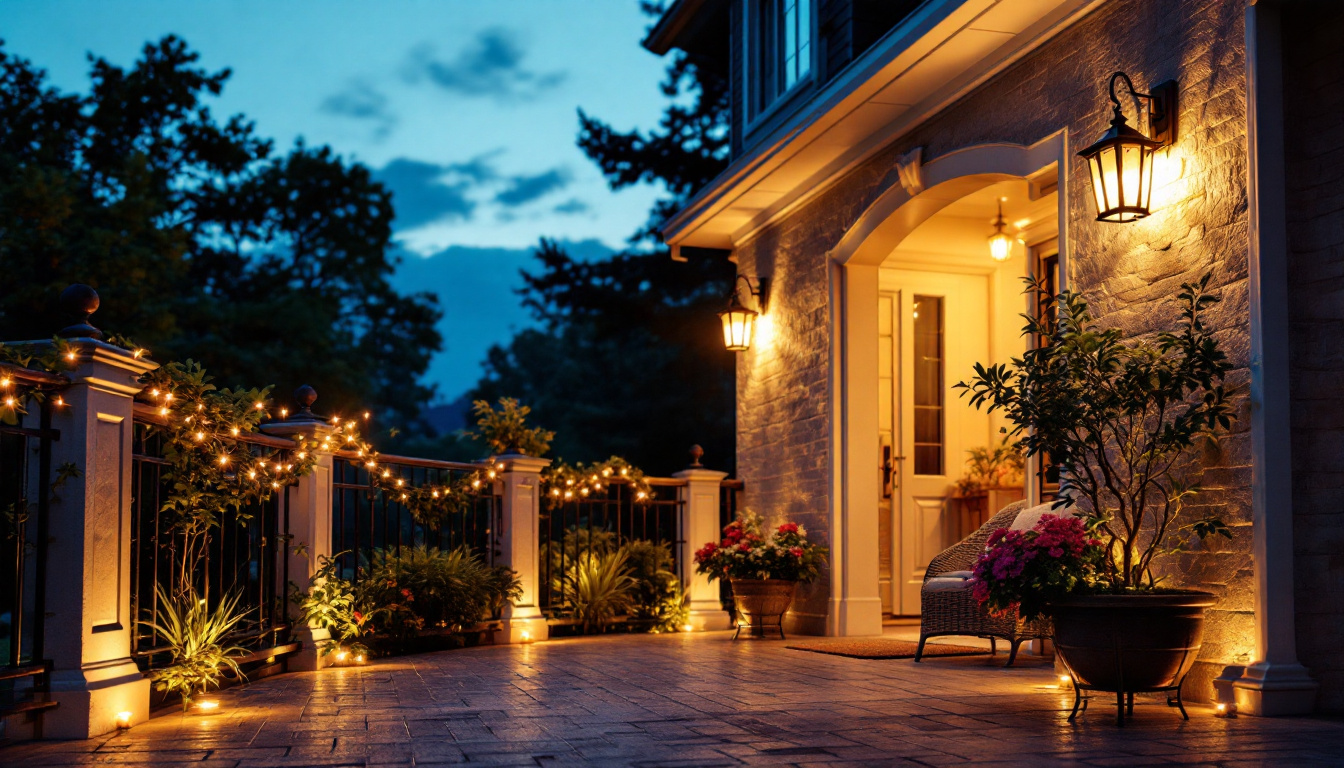

In the ever-evolving world of outdoor landscape lighting, contractors play a pivotal role in transforming spaces into illuminated masterpieces. As the demand for aesthetically pleasing and functional outdoor lighting solutions grows, understanding the essentials of working with outdoor landscape lighting companies becomes increasingly important. This article delves into the key elements that lighting contractors should consider when collaborating with these specialized firms.
Before diving into the essentials, it’s crucial to grasp the current landscape lighting market. This sector has seen a surge in popularity, driven by advancements in technology, energy efficiency, and a growing appreciation for outdoor spaces. Homeowners and businesses alike are investing in outdoor lighting to enhance security, improve aesthetics, and extend the usability of their properties after dark. The increasing trend of outdoor living spaces, such as patios and gardens, has further fueled the demand for effective lighting solutions that complement these areas. As a result, the landscape lighting market is evolving rapidly, with new products and innovations emerging to meet the diverse needs of consumers.
Staying updated on the latest trends is essential for lighting contractors. smart lighting systems, which can be controlled via apps or voice commands, are becoming increasingly popular. These systems not only offer convenience but also allow for customization, enabling clients to create the perfect ambiance for any occasion. Additionally, the integration of smart technology with landscape lighting can enhance security features, such as motion sensors and automated timers, providing homeowners with peace of mind while they enjoy their outdoor spaces.
Moreover, sustainable lighting solutions, such as solar-powered fixtures and energy-efficient LEDs, are gaining traction. Clients are more conscious of their environmental impact and are looking for options that align with their values. Contractors should be prepared to offer these eco-friendly alternatives to meet client expectations. The rise of smart technology also intersects with sustainability, as many modern systems are designed to optimize energy consumption, further appealing to eco-conscious consumers. As the market continues to evolve, staying informed about these innovations will be crucial for contractors aiming to remain competitive.
Clients today are more informed than ever. They often come with specific ideas and expectations regarding their outdoor lighting projects. Understanding these expectations is vital for contractors. Clients typically seek a combination of functionality, aesthetics, and energy efficiency. They want solutions that not only enhance the beauty of their landscapes but also provide safety and security. Many clients are also interested in the latest design trends, such as minimalist fixtures or vintage-inspired designs, which can significantly influence their choices.
Effective communication is key. Contractors should engage clients in discussions about their vision, budget, and any concerns they might have. This collaborative approach fosters trust and ensures that the final outcome aligns with the client’s desires. Additionally, providing clients with visual aids, such as design mock-ups or 3D renderings, can help them better understand how different lighting options will look in their outdoor spaces. By actively involving clients in the design process, contractors not only enhance client satisfaction but also create a sense of ownership that can lead to referrals and repeat business.
Selecting the right outdoor landscape lighting company is a critical step for contractors. The choice can significantly impact the quality of the project and the satisfaction of the client. Here are some essential factors to consider when making this decision.
When evaluating potential lighting companies, reputation and experience should be at the forefront. Companies with a proven track record are more likely to deliver high-quality products and services. Reading reviews, asking for references, and examining past projects can provide valuable insights into a company’s reliability and expertise.
Moreover, experience in the specific type of lighting required for the project is essential. Whether it’s path lighting, accent lighting, or security lighting, a company that specializes in these areas will have the necessary knowledge and skills to execute the project effectively.
The quality of products offered by a lighting company can make or break a project. Contractors should look for companies that provide durable, high-quality fixtures that can withstand outdoor conditions. Additionally, a diverse product range allows contractors to cater to various client preferences and project requirements.
Companies that offer customizable solutions can also be advantageous. This flexibility enables contractors to create unique lighting designs tailored to the specific needs of each client, enhancing the overall appeal of the project.
Collaboration is essential for the success of any lighting project. A good outdoor landscape lighting company should provide comprehensive support throughout the project lifecycle. This includes assistance with design, installation, and even maintenance. Contractors should seek companies that are willing to work closely with them, offering guidance and expertise as needed.
Additionally, ongoing support after the installation is crucial. Lighting systems may require adjustments or repairs over time, and having a reliable partner for maintenance can significantly enhance client satisfaction.
Designing an effective outdoor lighting plan involves several key components. Understanding these elements is vital for contractors to create beautiful and functional lighting solutions.
One of the fundamental principles of outdoor lighting design is layering light. This technique involves using multiple types of lighting—ambient, task, and accent—to create depth and dimension in the landscape. Ambient lighting provides overall illumination, task lighting focuses on specific areas, and accent lighting highlights architectural features or landscaping elements.
By layering light, contractors can create a balanced and inviting atmosphere, enhancing the usability of outdoor spaces while also showcasing the beauty of the landscape.
Each landscape is unique, and effective lighting design should take into account the specific features of the property. This includes trees, pathways, water features, and architectural elements. Understanding how these features interact with light is essential for creating a harmonious design.
For instance, uplighting can be used to highlight the texture of tree bark, while downlighting can illuminate pathways for safety. By strategically placing fixtures, contractors can enhance the natural beauty of the landscape while ensuring functionality.
In today’s environmentally conscious world, energy efficiency and sustainability are paramount. Contractors should prioritize lighting solutions that minimize energy consumption while maximizing performance. This includes using LED fixtures, which consume significantly less power than traditional incandescent bulbs and have a longer lifespan.
Incorporating solar-powered lights can also be an excellent option for certain applications. These fixtures harness solar energy, reducing reliance on the electrical grid and lowering energy costs for clients. By promoting sustainable practices, contractors can not only meet client expectations but also contribute positively to the environment.
Once the design phase is complete, the next step is installation. Adhering to best practices during the installation process is crucial for ensuring the longevity and effectiveness of the lighting system.
Before installation begins, a detailed plan and layout should be established. This involves marking the locations of fixtures, considering the angle of light, and ensuring that all elements are positioned for optimal performance. Proper planning helps avoid potential issues during installation and ensures that the final result aligns with the design vision.
Additionally, contractors should consider factors such as electrical access and the potential for future maintenance when planning the layout. A well-thought-out installation process can save time and resources in the long run.
Safety is paramount during the installation of outdoor lighting systems. Contractors should adhere to all relevant safety codes and regulations, ensuring that electrical components are installed correctly and securely. This includes using weatherproof fixtures and ensuring that all wiring is properly protected from the elements.
Moreover, contractors should be mindful of potential hazards, such as uneven terrain or existing landscaping features. Taking precautions during installation can prevent accidents and ensure a smooth process.
After installation, thorough testing is essential to ensure that the lighting system functions as intended. This includes checking for proper illumination levels, adjusting angles, and making any necessary modifications to achieve the desired effect.
Contractors should encourage clients to provide feedback during this phase. This collaborative approach allows for adjustments to be made, ensuring that the final outcome meets or exceeds client expectations.
Once the outdoor lighting system is installed, maintenance becomes a crucial aspect of ensuring its longevity and performance. A well-maintained system not only functions better but also enhances the overall satisfaction of clients.
Conducting regular inspections of the lighting system is essential. This involves checking for any signs of wear or damage, ensuring that fixtures are clean, and verifying that all components are functioning correctly. Regular inspections can help identify potential issues before they escalate, saving clients time and money in the long run.
Contractors should establish a maintenance schedule that aligns with the specific needs of the lighting system and the preferences of the client. This proactive approach can significantly extend the lifespan of the system.
Outdoor lighting fixtures are exposed to the elements, which can lead to dirt and debris buildup. Regular cleaning is necessary to maintain optimal performance and aesthetics. This may involve wiping down fixtures, checking for any obstructions, and ensuring that lenses are clear for maximum light output.
Additionally, contractors should educate clients on basic upkeep practices, empowering them to take an active role in maintaining their lighting systems.
As technology continues to advance, upgrading outdoor lighting systems may become necessary. Contractors should stay informed about new products and innovations in the industry, allowing them to offer clients the latest and most efficient solutions.
Encouraging clients to consider upgrades can enhance their lighting experience and improve energy efficiency. This not only benefits the client but also positions contractors as knowledgeable professionals who are committed to providing the best possible service.
In the competitive landscape of outdoor lighting, contractors must equip themselves with the knowledge and skills necessary to work effectively with outdoor landscape lighting companies. Understanding market trends, choosing the right partners, mastering design principles, adhering to installation best practices, and committing to ongoing maintenance are all essential components of success in this field.
By embracing these essentials, lighting contractors can not only meet but exceed client expectations, creating stunning outdoor spaces that illuminate the beauty of landscapes while enhancing safety and functionality. In doing so, they will establish themselves as trusted professionals in the outdoor lighting industry, paving the way for future growth and opportunities.
Ready to elevate your outdoor landscape lighting projects? Choose LumenWholesale for an unbeatable combination of quality and value. Our spec-grade lighting products are designed to meet the highest industry standards, ensuring your installations shine with reliability and performance. Say goodbye to middleman markups and hello to wholesale prices that put your budget first. Plus, with free shipping on bulk orders, you can stock up on premium lighting without any hidden fees. Don’t compromise on quality or cost—visit LumenWholesale today and discover the best value in wholesale lighting for your next project.

Explore the transformative journey of security lamps in the lighting industry, from traditional designs to cutting-edge smart technology.

Discover the essential insights every lighting contractor needs to know in “Litgh Blub.” From innovative technologies to industry best practices, this article illuminates the key facts that can transform your lighting projects and elevate your business..

Discover the essential insights lighting contractors need to know about outdoor porch lights.

Discover the essential insights lighting contractors need to know about solar lights, from installation tips to the latest innovations.
Get notified when NEW deals are released.
Optimize your budget with wholesale discounts.
Only top-quality, specification-grade lighting products.
No additional costs at checkout - what you see is what you pay.
We understand the unique needs of contractors.